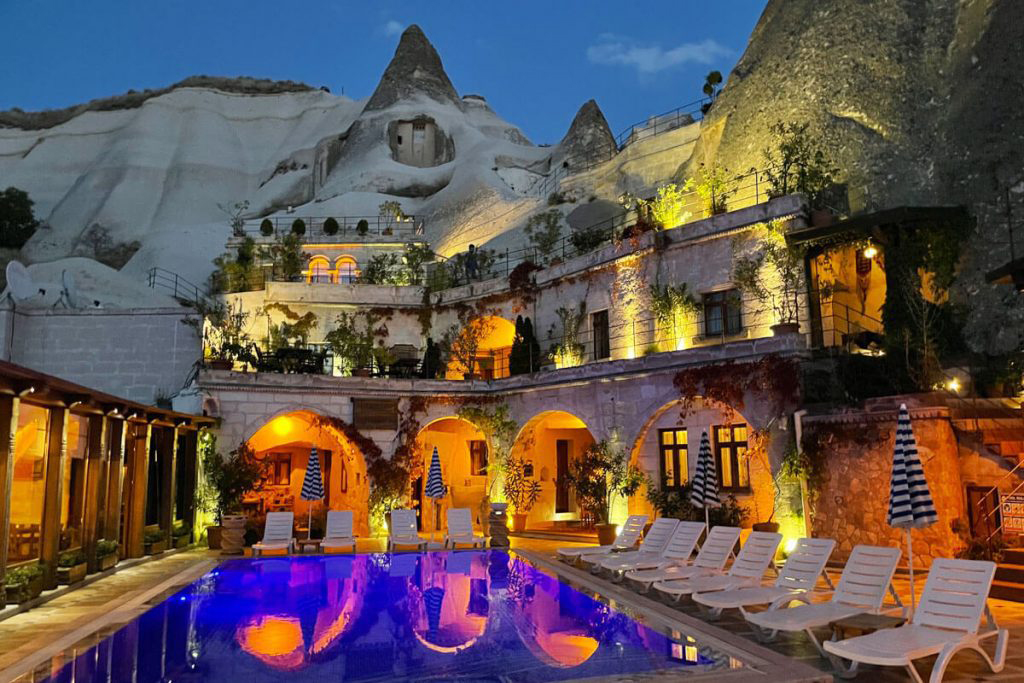Cappadocia gears up for record visitor numbers in 2022
Cappadocia, in eastern Türkiye enthralls visitors with its unusual

conical structures called “fairy chimneys,” its centuries-old underground cities and its early Christian-era churches carved into caves in the rock. Türkiye’s tourism officials are expecting visitor numbers in 2022 to skyrocket. The signs are clear: Cappadocia hosted an extraordinary number of visitors in the first quarter of 2022, a whopping 54% increase over the first quarter
of 2021.
Cappadocia gained fame in antiquity for its topography born millions of years ago as the African and Asian tectonic plates created a landscape like no other on planet Earth. Some say the best way to see Cappadocia’s landscape is on a hot air balloon ride. The colorful balloons launch around five ‘o clock in the morning from the village of Göreme, and give visitors sweeping views of Pigeon Valley, Zemi Valley, Love Valley and Pasabağ Monks Valley, along with the famous fairy chimneys and other fanciful rock formations.
The ultimate bucket-list experience is to stay one in of the many “cave hotels,” ranging from simple to five-star. Rock-carved rooms bring history and modern amenities together in a luxurious blend. Many cave-hotel rooms have both views, and private floodlit indoor pools deep inside mountains.
Known since antiquity as the ‘land of beautiful horses,” many visitors go horseback riding, particularly phenomenal at sunset. The Ihlara Valley is perfect for strolls or hikes, with stops for Turkish coffee at gazebos along the Melendiz stream. Jeep and ATV safaris take travelers to hard-to-reach churches and hidden valleys.
A UNESCO World Heritage site, the Göreme Open Air Museum is a complex of frescoed, rock-carved churches that recall the area’s earlier inhabitants, including Assyrians, Hittites, Phrygians, Hellenes, Romans, Byzantines, early Christians and the arrival of Islam. The Three Beauties fairy chimney formation in Ürgüp is one of the region’s most-photographed sites. The 18th-century Church of Saints Constantine and Helena in Mustafapaşa was built during the reign of Sultan Ahmet I. Ortahisar Castle is a striking citadel carved into the rock.
Cappadocia has been inhabited for centuries, often underground. Multi-level subterranean cities, carved entirely from rock, date to the seventh and eighth centuries BC. The underground cities of Kaymaklı, Derinkuyu, Özkonak, Mazi and Tatlarin open a window into the daily life of their inhabitants, where rock-carved tunnels connect dozens of living, worship and storage areas.
Like the cuisines of every other region in Türkiye, Cappadocian cuisine was shaped by the area’s cultural heritage and its local seasonal products. A delicious egg dish, menemen, is complemented by fragrant Turkish tea. Apricot stew, pottery kebabs and zerdeli saffron rice are musts, as are Cappadocia’s wines produced from centuries-old vines.
Cappadocia’s fairy-tale landscape makes it a popular wedding and honeymoon destinations…romantic nights in caves, sunset wine on the terrace, hot air balloons, and Turkish baths amount to an unforgettable combination.
Cappadocia is a little over an hour’s journey from Istanbul – and a “must-include” for many American visitors to Türkiye. Visit www.goturkiye.com for info.




